- Home
- Charles de Lint
Moonheart
Moonheart Read online
MOON HEART
Tor books by Charles de Lint
Dreams Underfoot
The Fair at Emain Macha
Into the Green
The Little Country
Moonheart
Spiritwalk
MOONHEART
CHARLES DE LINT
ORB
A TOM DOHERTY ASSOCIATES BOOK
NEW YORK
Part One – The Wren’s Thistle Cloak
Tell me where is fancy bred,
Or in the heart or in the head?
—WILLIAM SHAKESPEARE
Chapter One
Sara Kendell once read somewhere that the tale of the world is like a tree. The tale, she understood, did not so much mean the niggling occurrences of daily life. Rather it encompassed the grand stories that caused some change in the world and were remembered in ensuing years as, if not histories, at least folktales and myths. By such reasoning, Winston Churchill could take his place in British folklore alongside the legendary Robin Hood; Merlin Ambrosius had as much validity as Martin Luther. The scope of their influence might differ, but they were all a part of the same tale.
Though in later years she never could remember who had written that analogy of tale to tree, the image stayed with her. It was so easy to envision:
Sturdily rooted in the past, the tale’s branches spread out through the days to come. The many stories that make up its substance unfold from bud to leaf to dry memory and back again, event connecting event like the threadwork of a spider’s web, so that each creature of the world plays its part, understanding only aspects of the overall narrative, and perceiving, each with its particular talents, only glimpses of the Great Mystery that underlies it all.
The stories on their own are many, too myriad to count, and their origins are often too obscure or inconsequential on their own to be recognized for what they are. The Roman statesman Marcus Tullius Cicero said it best: “The beginnings of all things are small.”
Though he lived and died some two thousand years before Sara was born, and though the tale was so entangled by the time she came into it that it would have been an exercise in futility to attempt to unravel its many threads, Sara herself came to agree with Cicero. Years later she could pinpoint the exact moment that brought her into the tale. It was when she found the leather pouch with its curious contents in one of the back storerooms of her uncle’s secondhand shop.
The Merry Dancers Old Book and Antique Emporium was situated on Bank Street, between Third Avenue and Fourth in the area of Ottawa called the Glebe. It was owned by Jamie Tams who took his inspiration for the name from the aurora borealis, the northern lights that the French call les chèvres dansantes. The dancing goats.
“It’s quite appropriate,” he told Sara one day. He was leaning on the long display case that supported the relic of a cash register which worked by turning a crank on its side. “Think about it. The Arctic’s what? Ice and snow. Tundra and miles of nothing at best. Who’d expect a treasure like the Dancers in a place like that?”
Sara smiled. “Are you implying that somewhere in all this junk there’re similar treasures to be found?”
“Implying? Nope. It’s a straight fact. When was the last time you went through the jumble of boxes in the back rooms? There could be anything in them—not valuable, mind, but treasures all the same.”
He stared pointedly at Sara’s typewriter, an IBM self-correcting Selectric, and the pile of paper that was stacked beside it.
“If you weren’t so busy writing the Great Canadian Novel . . .”
“What sorts of things?” Sara wanted to know. “Like Aladdin’s lamp?”
“You never can tell.”
“I suppose not.”
“And,” Jamie finished triumphantly, “if you never look, you’ll never know either!”
Sara tried, but she couldn’t keep a straight face any longer. They both broke into laughter.
Neither of them needed to work—at least not for financial considerations. Jamie in his time, and now Sara in hers, ran The Merry Dancers as a hobby. That it showed any sort of a profit at all at the end of each fiscal year was as much due to luck as through any particular effort on their part, though Sara was more conscientious in her management than Jamie’d ever been. (“Comes with being young,” Jamie warned her darkly. “Wait’ll you get older. The whole place’ll fall to pieces around you as you go doddering about. You’ll see.”)
It was a standing joke between them that whenever Jamie visited the store, at one point or another, he’d play the concerned proprietor. But for all the teasing, they both knew that if they ever made the shop as tidy as some of the newer ones on the street, it would lose half of its charm.
The Merry Dancers was cluttered, certainly somewhat dusty, but not dirty. Leaning bookshelves stuffed with fat, leather-bound volumes took up two walls, while the bay windows in front held a curious sampling of items the store offered, set out in a confusing array that put off as many people as it attracted. There were treasures to be found, indeed, but not for the fastidious. Clutter swirled like autumn leaves around old chairs, dressers, sideboards, desks, rockers, wicker tables and an umbrella stand overflowing with rolled-up maps, knobby-ended walking sticks and an African shaman’s staff.
Behind the cash area it was no tidier. A walnut-paneled door led to the storerooms, a washroom, and a tiny kitchen meant only for someone without a trace of claustrophobia in their mental make-up. There were more shelves on the walls, laden with everything from books and calendars stacked a foot high to more curious wonders. To one side, set up so that she could look out the front windows when she was thinking, was Sara’s desk holding her typewriter, paper, ashtray, coffee mug, tottering piles of reference books, a stuffed brown bear called Mr. Tistle with a plaid patched stomach, a stack of National Geographics and a copper-and-brass pencil holder—all in a four-by-three-foot surface area.
That didn’t include the pigeonholes at the back of the desk, stuffed with letters (answered and unanswered), envelopes, more paper, her driver’s license (that she never remembered to take with her when she used the car), a small Aiwa cassette player, that was connected to a pair of Monitor Audio speakers balanced precariously on wrought iron brackets above the bay windows, and the filing system for her fledgling writing career that included notes (hundreds of them on anything from matchbook covers to the small sheets torn out of her spiralbound notebook), information on who had what story and how often it’d been rejected, a list of her accepted stories (eleven of them!), and the addresses for all her correspondents that had started out being in alphabetical order but somehow degenerated into catch-as-catch-can.
On the day that Sara found the pouch she’d been thinking of the storeroom and all those unopened boxes gathering dust. It was easier to think of them than to decide if she was writing a thriller, a Gothic, a fantasy, or some bizarre permutation of the three. The boxes came from rummage sales, estates, country auctions and Lord knew where. Her writing hadn’t been going well that day so she decided to make a start on them.
Perched on a stool behind the counter, her typewriter covered with a piece of velvet with frayed edges and moth-holes to keep the dust from it, she was working on her third box. Like the first two it had decidedly more junk and dust in it than any sort of treasure. Sighing, she ignored the grime that coated her hands and entrenched itself under her fingernails and tried to make the best of it. She tapped her foot along with Silly Wizard, a Scots folk group that were playing on the cassette machine, her thoughts lost in daydreams.
While Sara was one of that exiguous segment of the world’s population that views the commonplace through a screen of whimsy, she was not flighty. She could dream about the history of a particular knickknack, creating in her mind all so
rts of implausible origins for it at the same time as she decided on a price, neatly printed the amount on a small sticker, and attached it to the bottom of the item in question.
Rummaging through the box that day, she was, if not a candidate for the next cover of Chatelaine, at least a study of enterprise. Her thick brown curls fell past her shoulders with all the unruly orderliness of a hawthorn thicket. She was small and thin, with delicate bones and intensely green eyes, her features not so much classically beautiful as quirky. She was, as usual, dressed in a pair of faded jeans and a shapeless old sweater and a pair of practical brown leather shoes in desperate need of a polish.
“I’ve got to feel real,” she would respond wearily to whichever well-intentioned friend was the latest to ask why she couldn’t be a little more fashionable. “It’s hard enough the way things are, without walking around like a mannequin.”
“But . . .” the intrepid soul might start to argue.
“What I’d really like to be,” Sara’d say then, “is a genuine tatterdemalion. You know—all patches and loose bits?”
Blowing the dust off the newest layer that the box had to offer, she certainly felt real, if not a complete ragamuffin. She’d just managed to put three finger-wide streaks of dirt on her cheek and breathed in a cloud of dust at the same time. Coughing, she dug out the latest treasure—a wind-up plastic bear that would have beaten its tiny drum if its drumsticks weren’t broken off, its key lost, and—she rattled it speculatively—its innards not a jumble of loose bits. She considered throwing it out, glanced at Mr. Tistle, then found she didn’t have the heart. She wrote 10¢ on a sticker, stuck it on the bottom of its foot, and tried again. A brass ashtray joined the bear (75¢), then a saucerless teacup (50¢), a tin whisk (15¢), and a postcard of the Chateau Laurier in a wooden frame ($2.50—because of the frame).
It must be time for lunch, she thought as she reached in again.
This time she came up with a parcel wrapped in brown paper. The Scotch tape that held the end flaps down were yellow and brittle with age. Pretending it was Christmas, or her birthday, she squeezed and shook it about a bit. Then, when she couldn’t guess, she opened it.
Inside was a framed picture and a small leather bag that looked like it was made of tanned moosehide. Its drawstrings were tied in a knot. Well, this was nice, she thought, looking the bag over. She could use it as a changepurse, seeing how she’d lost her old one last night somewhere between leaving the store and reaching home.
She set the bag aside to look at the picture. It was a pen-and-ink line drawing that had been painted with watercolors. The frame was a white wood that she couldn’t place—a hardwood, at any rate, with a very fine grain. The picture was of two men sitting across from each other in a woodland glade. Though the painting was small, there was a lot of detail packed into it. The forest reminded Sara of Robert Bateman’s work—the tree trunks were gnarled and had a barky texture; the leaves seemed separate and exact. The grass blades, the rough surface of the big stone at the edge of the clearing were all intricately rendered.
She turned her attention to the men. One was an Indian. He sat cross-legged, with a small ceremonial drum on his knee, his thick black hair hanging down either side of a square-featured face in two beaded braids. His leggings and shirt were of a plain doeskin; an ornamental band of colored beads and dentalium shells formed the shirt’s collar. His eyes, against the coppery tan of his skin, were a startling blue.
Sara sat back and held the painting farther away for a moment. The detail was incredible. Each bead in the Indian’s braids was a different color. She was amazed at the artist’s skill, for she’d tried painting once and had given it up as a hopeless cause. But the experience left her with a sense of awe whenever she came across something this good. Bending closer again, she studied the Indian’s companion.
He was obviously Caucasian, for all that the artist had given him a dark tan, and didn’t look anything like the first explorers or coureurs de bois that Sara remembered from her history books (though why she thought to date the scene didn’t occur to her at that moment). He looked older than the Indian, with grey streaks in his red hair. His clothing was leather as well—as primitive as his companion’s but obviously of a different culture. Around his neck was a leather thong holding a curious Y-shaped object. By his knee was what looked for all the world like a small Celtic harp. His eyes, Sara noted with a sense of satisfaction, were as green as her own, though why that should please her, she couldn’t say.
The two men were sharing a pipe—the Indian held it, smoke streaming upward in a long spiral, and was passing it to the red-haired man. It was probably a peacepipe, Sara decided. She searched for a signature, but could find nothing to identify the artist. Sighing, she laid it aside and had a look at the pouch that had shared the painting’s package. Maybe something in it would give her a clue.
Untying the knot, she shook the pouch’s contents onto the countertop. Curious, she thought, examining the objects that came to light. There was a curved claw, its pointed end too dull to be a cat’s. More like a dog’s . . . or a wolf’s. She turned it over in her fingers and decided from its size that it had belonged to something smaller. Like a fox.
Next was a bundle of tiny brown feathers, tied together with leather. Then kernels of dried corn, ranging in color from a very dark brown through rust to yellow, that were threaded on another bit of leather. A rounded pebble, with thin layers of what looked like quartz running through it, followed. The last two objects were the strangest yet.
One was a flat disc made of bone. Holding it up to her eyes, she could make out a faint trace of design on either side. On one was a pair of stag’s horns, each point carefully delineated, on the other a quarter moon. Around the edge of each side ran a design that was worn so much it was almost impossible to make out. She held it under the lamp that served to light her desk and squinted, then finally dug a magnifying glass out of a drawer and studied the disc properly. The designs jumped out under magnification, they were intertwining bands of Celtic ribbonwork.
She sat back and thought about that, laying both magnifying glass and disc on the counter in front of her. Now here was something to dream about if ever there was. The disc was about the size of a checker and well worn, rounded like a fat button. What had it been used for?
The last object was a small ball of hardened clay, about the size of the large marbles she used to play with in grade school. Poking experimentally at the clay, a piece flaked off to reveal a dull gleam like brassy metal. A little pinprick of excitement ran up Sara’s spine as she carefully broke away the clay. When she was done, she held in her hand a tiny ring, about a quarter-inch wide, with, she discovered when she investigated it under the magnifying glass, the same spiraling ribbonwork that she’d found on the bone disc. Weird. She hefted the ring in her hand, decided it was made of gold and tried it on. It was a perfect fit for the ring finger of her left hand.
She admired it for a moment or two, then had a sudden vision of cursed rings that couldn’t be removed and tugged it off. When it lay in her hand again, she laughed at her overactive imagination and set the ring down with the rest of the pouch’s contents. What a strange find, she thought, smiling at her luck.
Sara was the sort of person who thought a lot about luck. “Find a penny, pick it up; all the day you’ll have good luck.” She always did, no matter how tarnished or grungy the coin was. She never walked under ladders, nor let a black cat cross her path, sometimes circling a whole block just to avoid that invisible trail of ill chance. She always sent all twenty copies of a chain letter on, for all that she was sure it was a con job. Walking along a streambed, she’d pick one smoothed pebble out of hundreds and keep it in her pocket for months. For luck.
And now there was this.
What it looked like was someone’s collection of luck. The claw, the pebble, the feathers, corn and bone disc—they were the sorts of things you might expect to find in an Indian’s medicine ba
g. Except Indians didn’t use Celtic ribbonwork, nor did they have gold rings. At least not in those days.
This time she stopped and wondered why she assumed it was so old. There was really no way that she could put a date to either the painting or the pouch . . . but she knew they were old. She just did. The intensity of that knowing gave her a queer feeling. She glanced at the painting again. A shaman and a Celtic bard, she thought.
Looking away, she blinked rapidly a few times and took a deep breath. Okay, it was old. Time to move on to more practical things. Whatever else the pouch had offered, there hadn’t been a clue to the identity of the artist. She looked at the side of the box to see if Jamie had bothered to note where they’d gotten the box. Printed in his neat handwriting, with a magic marker, was:
FROM THE ESTATE OF DR. ALED EVANS
Aled Evans. A Welshman, if the name was anything to go by. Sara tried to picture what he’d looked like. Sort of Albert Schweitzerish? She shrugged and studied the painting again, bending so close that her nose was just a few inches away from it.
For a moment everything wavered around her. She had the decidedly weird sensation that the store had vanished, to be replaced by the forest in the painting. The feeling came over her with a razor-sharp acuteness—so suddenly that it took her breath away. She could sense the gnarled cedar thickets and the thick grass of the glade, the tall pines sweeping skyward on every side of her, their dark green points stabbing the clouds. The rich pungent odor of dark loam filled her nostrils.
Startled, she looked up, half expecting the image to remain and the store to be gone. But the shop was still there, as cluttered as ever. Outside, the afternoon drizzle continued to mist down, slicking the streets and spraying the windows with a million tiny droplets. Silly Wizard were just finishing off a selection of jaunty reels. Nothing had changed. Except maybe in her, for to her eyes the store seemed vague, lacking the clear definition of the forest she’d just seen, felt, smelled. . . .

 Widdershins
Widdershins The Ivory and the Horn
The Ivory and the Horn Yarrow
Yarrow The Blue Girl
The Blue Girl Spirits in the Wires
Spirits in the Wires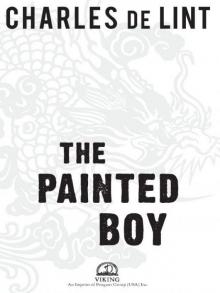 The Painted Boy
The Painted Boy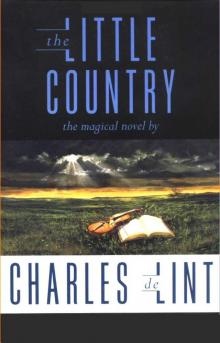 The Little Country
The Little Country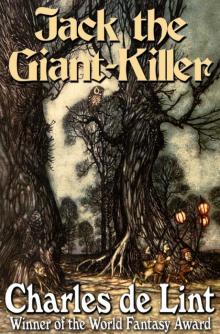 Jack of Kinrowan: Jack the Giant-Killer / Drink Down the Moon
Jack of Kinrowan: Jack the Giant-Killer / Drink Down the Moon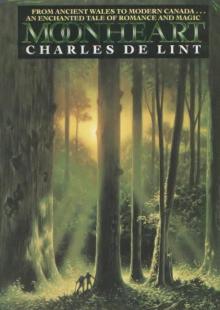 Moonheart
Moonheart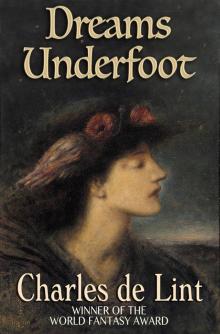 Dreams Underfoot
Dreams Underfoot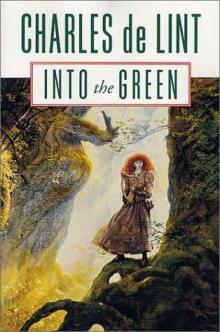 Into the Green
Into the Green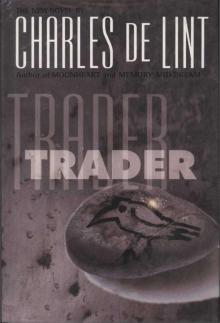 Trader
Trader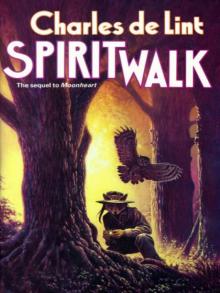 Spiritwalk
Spiritwalk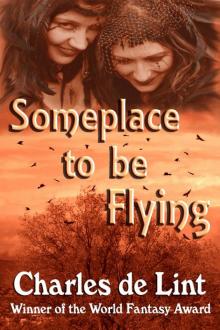 Someplace to Be Flying
Someplace to Be Flying Jack in the Green
Jack in the Green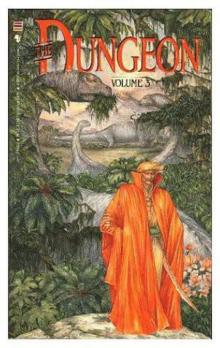 The Valley of Thunder
The Valley of Thunder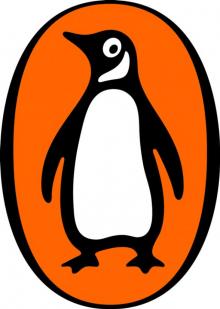 Out of This World
Out of This World The Cats of Tanglewood Forest
The Cats of Tanglewood Forest Seven Wild Sisters
Seven Wild Sisters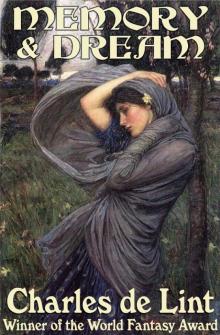 Memory and Dream
Memory and Dream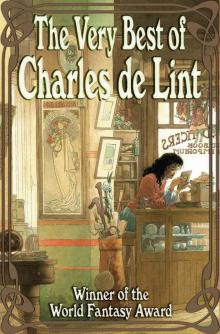 The Very Best of Charles De Lint
The Very Best of Charles De Lint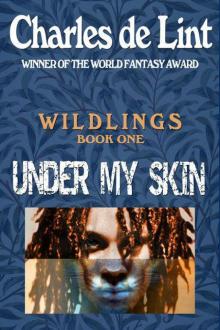 Under My Skin
Under My Skin Forests of the Heart
Forests of the Heart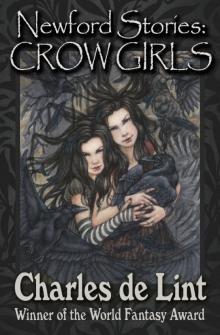 The Newford Stories
The Newford Stories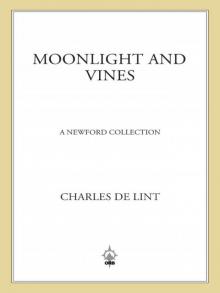 Moonlight and Vines
Moonlight and Vines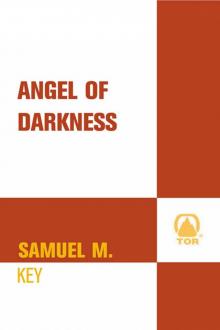 Angel of Darkness
Angel of Darkness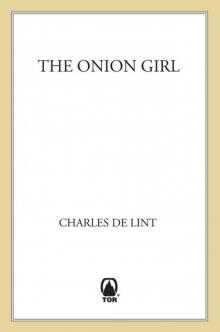 The Onion Girl
The Onion Girl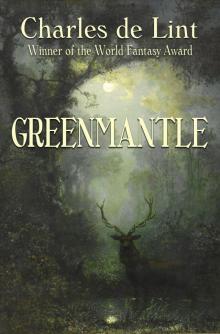 Greenmantle
Greenmantle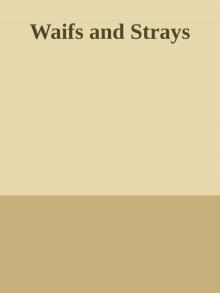 Waifs And Strays
Waifs And Strays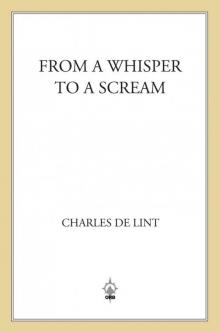 From a Whisper to a Scream
From a Whisper to a Scream Over My Head
Over My Head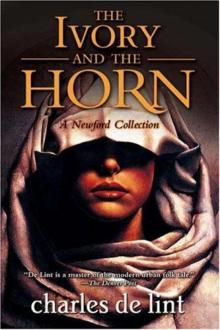 The Ivory and the Horn n-6
The Ivory and the Horn n-6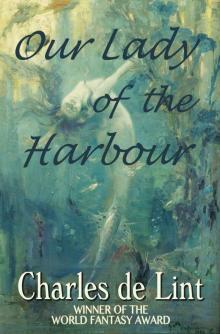 Our Lady of the Harbour
Our Lady of the Harbour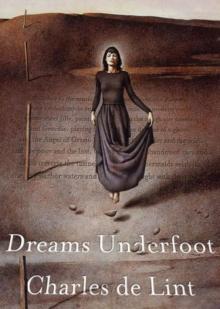 Dreams Underfoot n-1
Dreams Underfoot n-1 Jack the Giant-Killer (Jack of Kinrowan Book 1)
Jack the Giant-Killer (Jack of Kinrowan Book 1)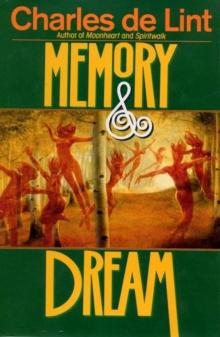 Memory and Dream n-5
Memory and Dream n-5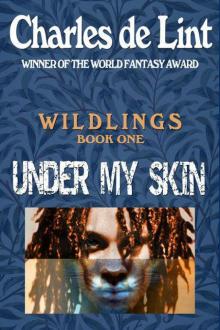 Under My Skin (Wildlings)
Under My Skin (Wildlings)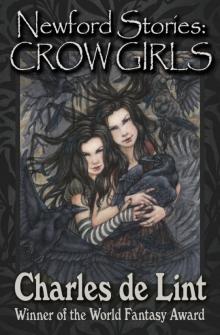 Newford Stories
Newford Stories The Wind in His Heart
The Wind in His Heart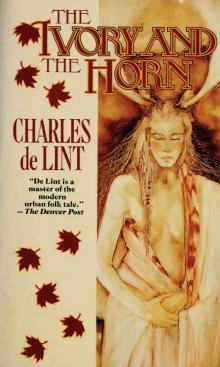 Ivory and the Horn
Ivory and the Horn